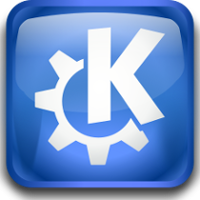I’m really eagerly following the progress of FreeBSD as a Desktop. On the latest hardware I’ve acquired, I had to fall back to Linux — which is fine — but I don’t find the level of granularity I’d like to have.
For example: openSUSE Tumbleweed works well "out of the box", but:
- if you enable snapshots of the home directory with Snapper (which I personally find useful), you have to manually disable quotas, otherwise, when there are many snapshots, the system freezes while deleting the old ones. This has been a longstanding “issue” with Btrfs — tolerable, but annoying. I disabled quotas, I don’t need them.
- I have to tweak SDDM for HiDPI — otherwise it’s tiny.
- LUKS iterations need to be adjusted — the default one is so complex that the system maxes out the CPU for about 30 seconds decrypting at every boot.
- an idle system has a ton of running processes — like other OSes.
- I didn't use ZFS
Alpine Linux is a pleasure to install and use, but:
- ZFS is not supported by the native installer. I'm optimizing a script (found online, which I’ve deeply modified) to install with ZFS, LUKS for encryption and boot, etc. Everything works, but I can’t get hibernation resume to work. I’m converting it to use ZFSBootMenu — a great solution, but hibernation remains a problem. I’ll keep working on it.
- the native installer supports Btrfs and encrypts everything (uses LUKS), but not the /boot — it’s acceptable, but not ideal. In this case, just adding resume= to GRUB makes it work.
For now, Alpine Linux. But I do miss native ZFS, jails, bhyve, etc., so I often find myself using the old desktop with the new monitor 😄





 🦘
🦘





